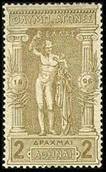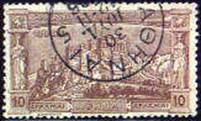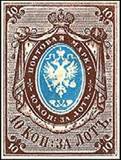New
Issues 2012
P=have O=don’t have it
A-H
In Alphabetic order
See:

Scott: #1570P
Issued: 01.11.2012
50th Anniversary of the First
 In side #1570 (in
margin): Algeria Mi #393
In side #1570 (in
margin): Algeria Mi #393

Thanks to Lou Guadagno
for the IDs and scans
Thanks to Prof. Plinio Richelmi

Scott: #???O
Issued: 27.12.2012
100th anniversary of Tadevos Minasyants

 Inside #???: Russia #4699O
Inside #???: Russia #4699O

Russia-USSR air letter envelope with imprinted indicia, c.
Thanks to Attilio Papio and Lou
Guadagno

Scott: #????-?O
Issued: 19.6.2012
Colonial Heritage III
 Inside #????: New South Wales #1O
Inside #????: New South Wales #1O
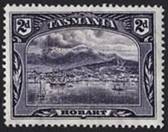 Inside #????: Tasmania #88O
Inside #????: Tasmania #88O

Scott: #????O
This stamp issue is
the third in the Colonial Heritage series, commemorating Australia's philatelic
past. Book-ending the stamps of the colonial period, it features a reworking of
Australia's first postage stamp design, "Sydney View" (1850), and one
of its last in the colonial period, "Hobart", from the Tasmanian
pictorial issue (1899-1900). Created some 50 years apart, the scenes featured
in the original designs serve very different purposes, each linked to its
specific historical moment.
The original Sydney
View is based on the Great Seal of NSW, which in turn was inspired by Josiah
Wedgewood's Sydney Cove medallion (1789), commemorating the landing of the
First Fleet in 1788. It features the allegorical figure of Industry, sitting on
a bale of goods and surrounded by her attributes, receiving three convicts and
gesturing to a scene of industry across the harbor. The scene is instructive and
redemptive, symbolizing the convicts' path to redemption and the colony's
advancement towards an idealized state.
In contrast,
Tasmania's pictorial issue expresses a confident young colony's apprehension of
its landscape and its reflection of this for broad consumption. The pictorial
issue arose from government photographer John Watt Beattie's suggestion to
develop a stamp issue to promote the colony's scenic attractions. By the mid to
late 19th century, early mass tourism was gaining traction, so the pictorial
stamps can be seen as paper ambassadors publicizing the natural beauty of the
colony wherever they went.

Scott: #992O
Issued: 14.7.2012
20th Anniversary of the Azermarka
Inside #992: Pseudo Stamp
 In margin:
In margin:
 In margin:
In margin:
Thanks to Lou Guadagno






Scott: #1041-46O
Issued: 19.4.2012
200th Anniversary of the

 Inside #1014: Bermuda #X1O
Inside #1014: Bermuda #X1O
 Inside #1042: Bermuda #1
Inside #1042: Bermuda #1
 Inside #1043:
Bermuda #56
Inside #1043:
Bermuda #56
 Inside #1044:
Inside #1044:
 Inside #1045:
Inside #1045:
Thanks to Lou Guadagno
The year 2012
marks the 200th anniversary of postal service in
In 1784, Joseph
Stockdale, founder of the Bermuda Gazette, delivered mail along
with the newspaper as a public service. This successful mail system continued
intermittently until an official postal system was established on March 6,
1812. By May 20, the
A key point in
the timeline of
By 1865, Perot’s
homemade stamps were replaced by printed postage stamps, which were printed
almost exclusively using the engraved, or gravure, printing method. By the
1920s, letter carriers were established. The first airmail arrived from the
The volume of
mail grew apace after World War II, and the General Post Office on the corner
of Parliament and Reid streets in
The 21st century
has seen the post office move into the digital age with the introduction of
R-Post for its business customers that compete on a global scale. R-Post is a
registered e-mail service that brings far greater agility and speed in
conducting business internationally, with the added benefit of irrefutable
proof to protect against common misunderstandings related to e-mail delivery,
content or time.

Scott: #1468O
Issued: 10.10.2012
Golden Jubilee (50th Anniversary) of the Bhutan Post
Inside #1468a-f:
|
|
|
|
|
Bhutan #4 |
Bhutan #83H |
Bhutan #84B |
|
|
|
|
|
Bhutan #105B |
Bhutan #152B |
Bhutan #153B |
Inside #???? (In Margin):
|
|
|
|
|
Bhutan #5 |
Bhutan #3 |
Bhutan #6 |
|
|
|
|
|
Bhutan #2 |
Bhutan #7 |
Bhutan #1 |
Thanks to Lou Guadagno

Scott: #3202O
Issued: 01.08.2011
21st Stamp Exhibition (Hologram)
 Inside #3202:
Brazil #2O
Inside #3202:
Brazil #2O

The Hologram
Lou wrote: This
is the second in a series of 3 issues-- the third, reproducing Brazil # 3, will
be issued in 2013 to co-inside with the 160th anniversary of the first stamps
of \Brazil and the exhibition. I will bet that there will also be a s/s issued
then which reproduces all 3 designs.
Thanks to Lou Guadagno and
Prof. Plinio Richelmi


Scott: #1074O, #1093O
Mi #2391-94, s/s Mi #Block 211
Issued: 30.05.2012
75th Anniversary, Zeppelin Hindenburg
Catastrophe
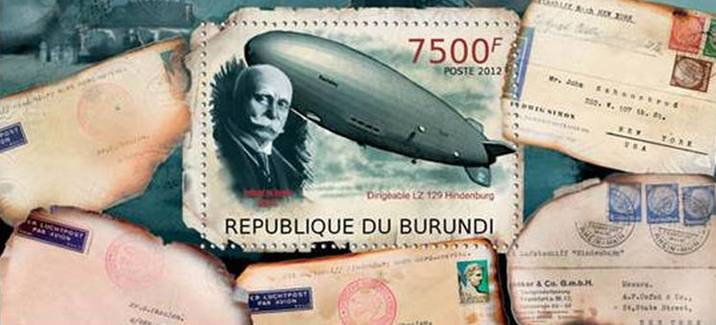


 Inside #1074, #1093: Netherlands #208
Inside #1074, #1093: Netherlands #208


 Inside #1074, #1093: Germany #395
Inside #1074, #1093: Germany #395
 Inside #1093: Germany #394
Inside #1093: Germany #394
 Inside #1093: Germany #428
Inside #1093: Germany #428
 Inside #1093: Germany #405
Inside #1093: Germany #405
Thanks to Lou Guadagno
for the IDs and scans
Thanks to Prof. Plinio
Richelmi and Mike Knopfler

Scott: #????O
Issued: 28.12.2012
Postal Transport

 Inside ???? (in margin): Italy #77
Inside ???? (in margin): Italy #77

 Inside ???? (in margin): U.S. #331 (changed
color) on post card
Inside ???? (in margin): U.S. #331 (changed
color) on post card


Inside ???? (in margin): Gt. Britain one penny imprinted
postal card, 1890 (partial)
Thanks to Lou Guadagno

Scott: #2513O
Issued: 16.01.2012
Queen Elizabeth II Diamond Jubilee (Decade 1: 1952-1962)
 Inside #2513:
Inside #2513:

Scott: #2513O
Thanks to Prof. Plinio Richelmi and to Lou
Guadagno

Scott: #2514O
Issued: 06.02.2012
Queen Elizabeth II Diamond Jubilee (Decade 2: 1963-1972)
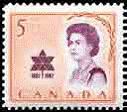 Inside #2514:
Inside #2514:
Thanks to Lloyd Gilbert and Prof.
Plinio Richelmi

Scott: #2515O
Issued: 06.03.2012
Queen Elizabeth II Diamond Jubilee (Decade 3: 1973-1982)
 Inside #2515:
Inside #2515:

Scott: #2515O
Thanks to Lloyd Gilbert and Prof.
Plinio Richelmi
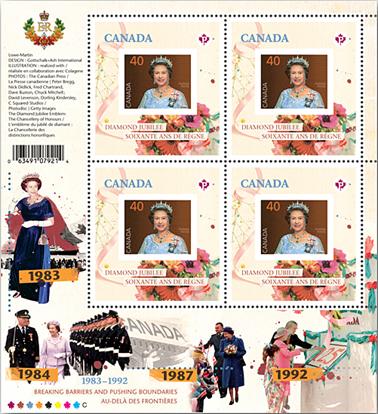
Scott: #2516O
Issued: 10.04.2012
Queen Elizabeth II Diamond Jubilee (Decade 4: 1983-1992)
 Inside #2516:
Inside #2516:
Thanks to Lloyd Gilbert

Scott: #2517O
Issued: 07.05.2012
Queen Elizabeth II Diamond Jubilee (Decade 5: 1993-2002)
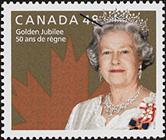 Inside #2517:
Inside #2517:

Scott: #2540O
Issued: 07.05.2012
Queen Elizabeth II Diamond Jubilee
 Inside #2540:
Inside #2540:

 Inside #2540:
Inside #2540:

Scott: #????O

Scott: #2540aO
Thanks to Lloyd Gilbert and to Lou Guadagno
This souvenir
sheet was inspired by the design of the $2 Queen Elizabeth II stamp and
features a magnified image of the young Queen Elizabeth. The stamp features an
image of a young Queen Elizabeth II facing a more recent photograph of Her
Majesty.
This year, the
Queen celebrates her Diamond Jubilee. This rare milestone was much-awaited by
philatelists and collectors. To mark 60 years of The Queen's reign, the Canada
Post Diamond Jubilee series offers stunning collectibles.
In 1897, the Post Office Department of the Government of Canada celebrated the
Diamond Jubilee of Queen
The design of
the souvenir sheet was inspired by the stamp and features a magnified image of
the young Queen Elizabeth that highlights the craftsmanship that went into
creating the intricate design of the stamp.
Her Majesty Queen Elizabeth II
The Queen came
to the throne on February 6, 1952. Her coronation took place on June 2, 1953.
Her Majesty
celebrated her Silver Jubilee (25 years) in 1977 and her Golden Jubilee (50
years) in 2002.
A Diamond Jubilee
is a rare milestone. Queen Elizabeth II is only the second British Monarch to
reign for 60 years. Her great-great grandmother, Queen Victoria—who celebrated
her Diamond Jubilee in 1897—was the first.


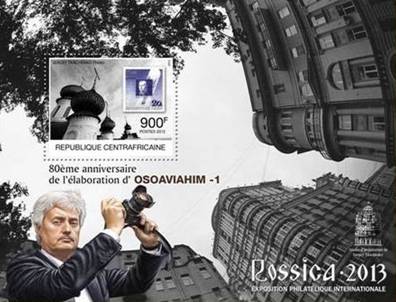


Scott: #????-?O
Issued: 20.08.2012
Rossica 2013
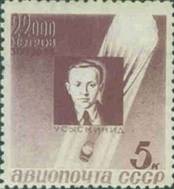 Inside #????a-b: Russia (USSR) #C50
Inside #????a-b: Russia (USSR) #C50
 Inside #????c-d: Russia (USSR) #C52
Inside #????c-d: Russia (USSR) #C52
 Inside #????e: Russia (USSR) #C51
Inside #????e: Russia (USSR) #C51
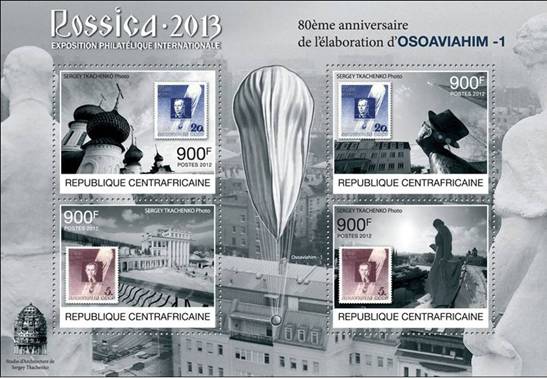
Scott: #????O
Thanks to Lou Guadagno

Scott: #4017O
Issued: 08.07.2012
 Inside #4017: China (PR) #787
Inside #4017: China (PR) #787
 Inside #4017: China
(PR)#790
Inside #4017: China
(PR)#790
Thanks to Lou Guadagno

Scott: #3523O
Issued: 20.1.2012
Traditions of Czech Stamp Production
 Inside #3523: TBI
Inside #3523: TBI
The
newly outlined Tradition of Czech Stamp Design issue commemorates another
of Czechoslovak and Czech stamp designers - Josef Liesler (19 September 1912,
Vidolice u Kadaně - 23 August 2005,
Liesler was a Czech
painter, graphic artist and illustrator. In the 1930s he graduated from the
He
taught drawing courses in 1945-49 and all his life remained proud of his work
as a teacher. He considered drawing as the basis of art. In his own work he
preferred graphic art, especially lithography, which gave him a chance to apply
harmony between precise lines and colours.
In
October 1939 he entered the history of Czech art by organising, jointly with
some other artists, an independent exhibition at the Topič Salon. The
artists called themselves Sedm v říjnu(Seven in October). The
event was triggered by sculptor Vincent Makovský who met the young
artists in the U Štýdlů pub and offered them the time window
for his
At
that time Liesler followed expressionism. His paintings reflected the
occupation time described in symbols. In his soul he always was a humanist, and
kept fighting also in his art against any form of restriction of freedom. His
paintings brim with rich shapes and full colours.
He
was admitted as a member of the prestigious association of artists Mánes
during the war, when he was still a young man. He was also one of the oldest
surviving members of Hollar, the association of artists he was proud to belong
to. Liesler won a number of awards, such as the UNESCO World´s Most Beautiful
Stamp Award (1975). Despite the initial lack of trust on the side of
philatelists - Liesler was too much modern and unconventional an artist for
them - he designed more than a hundred of stamps. He was very proud of his
membership in the glorious Academy in

Scott: #2066O
Issued: 31.07.2012
Legacy of the Alfarista Revolution
 Inside #206:
Inside #206:
Thanks to Prof. Plinio Richelmi

Scott: #2069O
(With gold inscription)
Issued: 16.08.2012
First Philatelic Exhibition of the South Pacific

 Inside #2069 (In logo):
Inside #2069 (In logo):

Scott: #2069cO
(With silver inscription)

Scott: #2069dO
(With red inscription)
Thanks to Lou Guadagno and Lloyd Gilbert

Scott: #1087O
Issued: 8.11.2012
120th Anniversary of E.F.O stamps
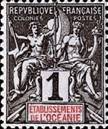 Inside #1087:
Fr. Polynesia #1
Inside #1087:
Fr. Polynesia #1
Modified: value in tablet
replaced with anniversary notation, inscription in black, not red
Thanks to Lou Guadagno



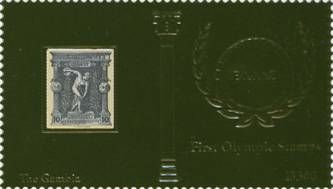








Scott: #????O
Issued: 02.08.2012
First Olympic Games
Inside #????: Greece #117-128O
|
|
|
|
|
Greece #117O |
Greece #118O |
Greece #119O |
|
|
|
|
|
Greece #120O |
Greece #121O |
Greece #122O |
|
|
|
|
|
Greece #123O |
Greece #124O |
Greece #125O |
|
|
|
|
|
Greece #126O |
Greece #127O |
Greece #128O |
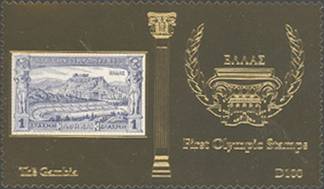
Thanks to Lou Guadagno and Prof. Plinio Richelmi
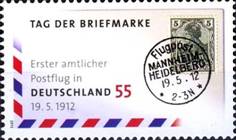
Scott: #2689O
Issued: 13.09.2012
Stamp Day: 100th Anniversary, First German
Airmail Flight
 Inside #2689: Germany #82
Inside #2689: Germany #82
Thanks to Lou Guadagno

Scott: #2996O
Issued: 06.02.2012
Diamond Jubilee of HM Queen Elizabeth II
 Inside #2996a: G.B. #306
Inside #2996a: G.B. #306
Thanks to Prof. Plinio
Richelmi and Lou Guadagno
Featuring images
taken from Britain’s stamps, banknotes and coins, the Miniature Sheet takes us
from Dorothy Wilding’s lovely 1952 portrait, to a special Diamond Jubilee
Machin printed with iridescent ink.All six stamps have been issued at First
Class inland letter rate.
Acknowledgements
Diamond Jubilee Wilding stamp – designed by
banknote
portraiture by Robert Austin – reproduced by permission; banknote portraiture
by Harry Eccleston – reproduced by permission;
coinage
portraiture by Mary Gillick – reproduced by courtesy of the
Diamond Jubilee
Machin stamp – designed by Jeffery Matthews MBE, FCSD, FRSA, from the
bas-relief portrait by Arnold Machin OBE, RA. Background typography by Sedley
Place.

Scott: #????O
Issued: ??.??.2012 (?)
Rossica 2013


Guinea Mi #8341 (s/s cut out)








Guinea Mi #7231 (sheetlet cut out)


Guinea Mi #8341 (s/s cut out)


Guinea Mi #4797-4798-4799 +
reverse
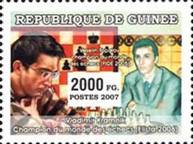
Guinea Mi #4572 (s/s cut out)
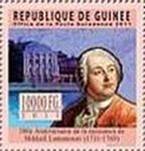
Guinea Mi #8341 (s/s cut out)
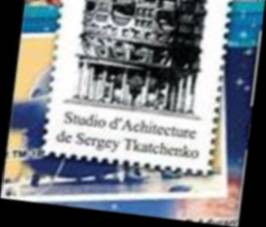
TBI


Guinea Mi Block #1111
(s/s cut out)





Thanks to Lou Guadagno
for the IDs and scans and thanks to Prof. Plinio Richelmi

Scott: #????O
Issued: ??.??.2012 (?)
100th Anniversary of Scouting in the U.S.
 Inside #????:
Inside #????:
Thanks to Lou Guadagno
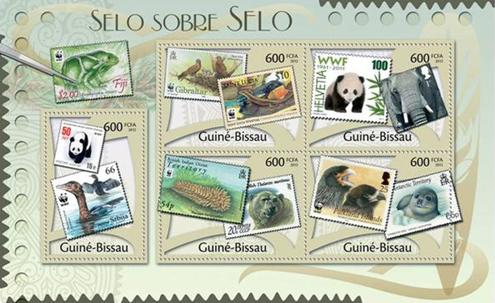

Scott: #????-?O
Issued: 05.01.2012
WWF
Inside #????:
|
|
|
|
|
|
|
|
|
|
|
G.B. #2883 |
|
|
|
|
|
|
|
|
|
|
|
|
|
|
|
|
|
|
 Inside #???? (In Margin - top):
Inside #???? (In Margin - top):

Inside #????:
 Inside #????:
Inside #????:
 Inside #????:
Inside #????:

 Inside #???? (In Margin - top):
Inside #???? (In Margin - top):
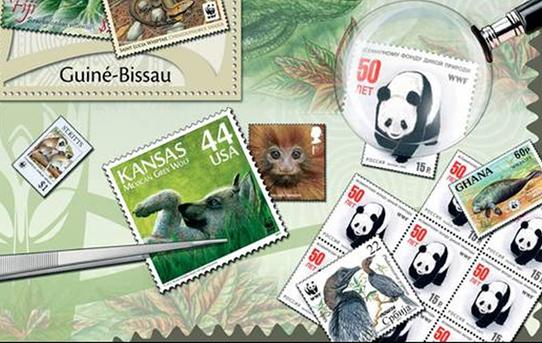
Inside #???? (In Margin):
|
|
|
|
|
|
|
|
St. Kitts #192 |
See note |
G.B. #2892 |
|
|
|
|
|
|
|
|
|
|
|
|
|
Note for
Lou: The U.S. stamp is some kind of fantasy issue—it’s good looking, but the
U.S. postal service will not pay any international organization like WWF and
the Olympics to use their logos, so that’s a give-away.
Thanks to Lou Guadagno
for the IDs and scans and thanks to Prof. Plinio Richelmi





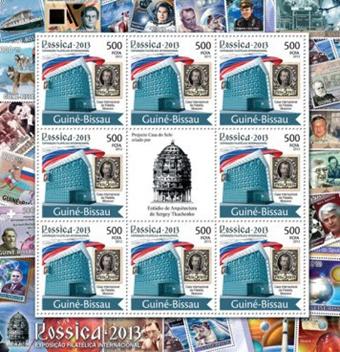



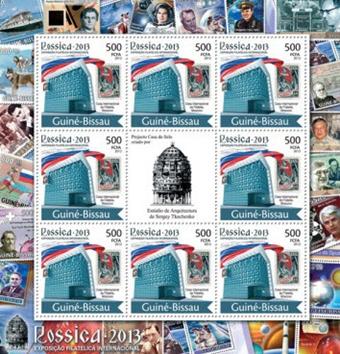

Scott: #????-?O
Issued: ??.??.2012
Rossica 2013 Exhibition Publicity
Inside #????:
|
|
|
|
|
|


|
|
|
|
|
|
|
Catalog
#9a imperf 1912 (See note) |
|
|
|
|
|
|
|
|
|
|
|
|
|
|
|
|
Lou wrote: I was
reading a bound copy of a short-lived British periodical, Stamp World (Vol. 1
1987) that I borrowed from the Collectors Club library, actually, just browsing
thru it for anything of interest and nothing in particular, when I came across
an article on a sale of Zemstvo stamps. One of the stamps pictured caught my
eye, and I thought immediately of the unidentified stamp in the
Then I went
on-line to the Cherrystone Auctions site and scrolled thru their recent Zemstvo
sale catalog and found a nice photo to scan.
The stamp is one
of two issued in 1912, and they are unusual, in that they are the only Zemstvos
that were a commemorative issue, and the only Zemstvos with a multi-color
picture. The two stamps reproduce illustrations from a book commemorating the
centenary of the War of 1812. Chuchin # 9a reproduces "Nyevyerolsky's
Heroic Deed".
Thanks to Lou Guadagno


Scott: #????O
Issued: 20.12.2012
50th Anniversary of the Anti-Malaria Campaign
 Inside #????a:
Tanzania #368 (from s/s)
Inside #????a:
Tanzania #368 (from s/s)
 Inside #????a: Macau #400
Inside #????a: Macau #400
 Inside #????a: Hungary #1462O
Inside #????a: Hungary #1462O
 Inside #????b:
Nepal #136
Inside #????b:
Nepal #136
 Inside #????b:
Sudan #142
Inside #????b:
Sudan #142
 Inside #????b: Iran #1206
Inside #????b: Iran #1206
 Inside #????c: Iran #1204
Inside #????c: Iran #1204
 Inside #????c: Colombia #C420
Inside #????c: Colombia #C420
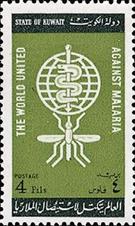 Inside #????c:
Kuwait #183O
Inside #????c:
Kuwait #183O
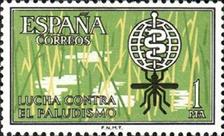 Inside #????d:
Spain #1132
Inside #????d:
Spain #1132
 Inside #????d: Senegal #B16
Inside #????d: Senegal #B16
 Inside #????d:
Saudi Arabia #253 with unauthorized date overprints
Inside #????d:
Saudi Arabia #253 with unauthorized date overprints
 Inside #????:
Angola #439
Inside #????:
Angola #439
 Inside #????:
Ethiopia #383O
Inside #????:
Ethiopia #383O

 Inside #???? (In Margin): Surinam
#305 on maximum card
Inside #???? (In Margin): Surinam
#305 on maximum card
 Inside #???? (In Margin): Nepal #135
Inside #???? (In Margin): Nepal #135
Lou wrote: Some strange sos
picks-- the Tanzania stamp, was "cut out" from a s/s, is imprinted
1986 but was issued in 1987, so it is not an 1962 anti-malaria
campaign issue as are all the others; the Saudi Arabian stamp is part
of a series of "not officially issued" overprints on the
actual Anti-Malaria stamps.
Thanks to Lou Guadagno
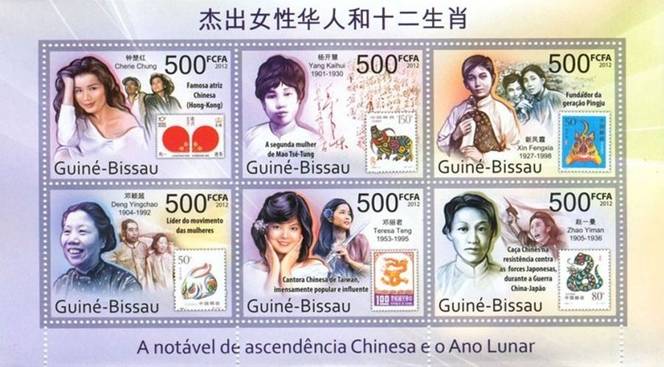

Scott: #????-?O
Issued: 20.12.2012
Chinese New Year-Famous Chinese Women
Inside #????:
|
|
|
|
|
Hong Kong #268 |
PR China #2748 |
PR China #2827 |
|
|
|
|
|
PR China #2932 |
China-Taiwan #1968 |
PR China #3083 |
Inside #????:
|
|
|
|
|
PR China #3161 |
China-Taiwan #2135 |
U. S. #3832 |
|
|
|
|
|
China-Taiwan #1588 |
PR China #2481 |
PR China #2550 |
Thanks to Lou Guadagno

Scott: #1546-51O
Issued: 08.12.2012
150th Anniversary of the Issuance
of
Inside #1546-51:
|
|
|
|
|
|
|
|
|
|
|
|
|
|
|
|

Scott: #1552O
 Inside #1552: Hong Kong #7
Inside #1552: Hong Kong #7

Mini Sheet
Scott: #????O

Mini Sheet
Scott: #????O
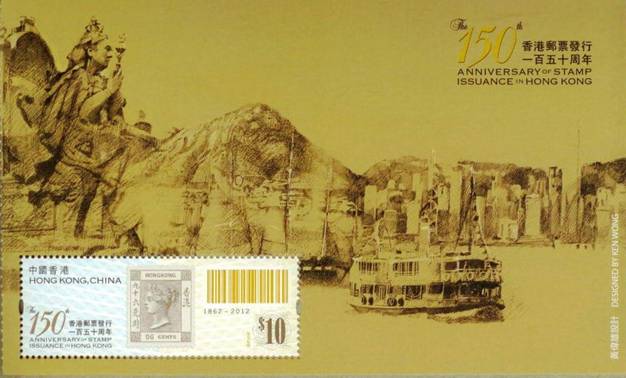
Booklet Pane

Booklet Cover

Booklet Pane

Booklet Pane
As early as 1841
when
It has been one
and a half centuries since the release of our first set of stamps on 8 December
1862 when
$1.40: The
two-cent stamp from our first stamp set appears on the left and is accompanied
on the right by a quill, a writing instrument believed to be invented in the
6th century.
$1.80: The
eight-cent stamp from our first stamp set appears on the right and is
accompanied by a fountain pen, a popular writing instrument since the late 19th
century.
$2.40: The
12-cent stamp from our first stamp set appears on the right and is accompanied
by a ballpoint pen, a prevalent modern writing instrument invented in the
1930s.
$2.50: The
18-cent stamp from our first stamp set appears on the left and is accompanied
by a typewriter, a regular item of office equipment between the late 19th and
late 20th century.
$3: The 24-cent
stamp from our first stamp set appears on the left and is accompanied by a
keyboard, the indispensable input device for a computer system since the late
20th century.
$5: The 48-cent
stamp from our first stamp set appears on the right and is accompanied by a QR
Code, a popular electronic data device today. With a camera phone equipped with
compatible applications, one can scan the QR Code on the stamp to gain instant
access to the webpage of "The 150th Anniversary of Stamp Issuance in
$10: Stamp
Sheetlet - Taking centre place of the stamp portion of the sheetlet is the
highest denomination stamp from our first issue. Positioned next to a barcode,
which is an item commonly used in the modern commercial world, this 96-cent
stamp and the other six stamps of lower denominations on the right of the
sheetlet form a complete set of our first stamps, making the sheetlet a truly
precious souvenir.
Thanks to Lou Guadagno and Prof.
Plinio Richelmi
See:
![]()





















